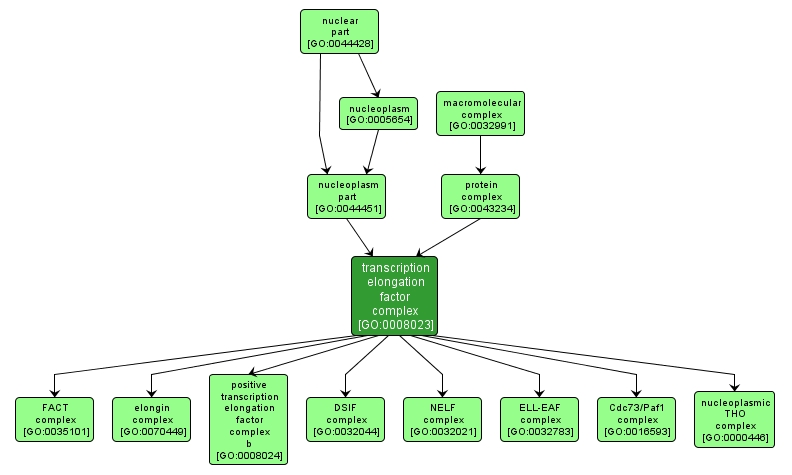GO TERM SUMMARY
|
| Name: |
transcription elongation factor complex |
| Acc: |
GO:0008023 |
| Aspect: |
Cellular Component |
| Desc: |
Any protein complex that interacts with RNA polymerase II to increase (positive transcription elongation factor) or reduce (negative transcription elongation factor) the rate of transcription elongation. |
|

|
INTERACTIVE GO GRAPH
|














